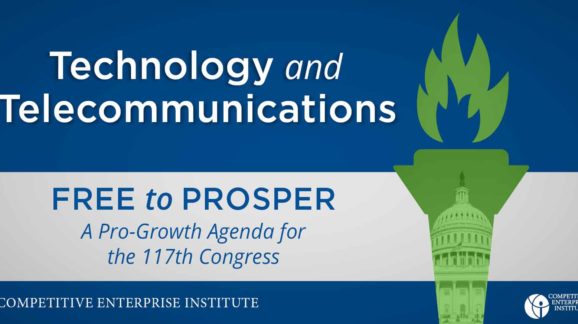Free to Prosper: Technology and Telecommunications

View the full chapter on technology and telecommunications here
Few economic sectors rival the technology and telecommunications industries in how rapidly—and momentously—they have evolved. Across the globe, the Internet and high-tech firms have reshaped how we work, live, and interact with one another. Just three decades ago, only a sliver of the population could afford mobile phones, while the World Wide Web had not yet been invented. Today, mobile devices are ubiquitous and more than half of the world’s population uses the Internet. Massive investment in information technology and infrastructure has fueled innovation, greatly expanded global productivity, created tens of millions of high-skilled jobs around the world, and improved our lives in ways few could imagine two decades ago.
As technology evolves, new challenges invariably arise, including for policy makers. Establishing ill-conceived rules could stifle the high-tech economy, especially if lawmakers bow to pressure from influential business interests or self-proclaimed consumer advocates to saddle emerging technology markets with arbitrary regulations or draconian liability regimes. This does not mean that government officials should simply ignore disruptive innovations. To the contrary, newcomers who redefine existing markets—or create new markets—often merit a reevaluation of existing rules to eliminate governmental obstacles to innovation. As history shows, most concerns about novel technologies eventually prove unfounded or overblown, especially given our capacity to adapt to a changing world without help from central planners.
As lawmakers consider how to govern the technology and telecommunications sectors, new mandates or prohibitions should be avoided in all but the most exceptional circumstances. Where new services or tools raise legitimate concerns about public health, consumer protection, or competition, lawmakers should resist the urge to act until they first observe how voluntary institutions—the marketplace and civil society—react to supposed market failures, if and when they arise. In the unlikely event that legislative intervention is necessary, Congress should change the law using a scalpel, not a sledgehammer.
At the same time, lawmakers should break out the sledgehammer when it comes to tearing down convoluted statutory and regulatory schemes devised in an earlier era— especially schemes administered by independent regulatory agencies, which in recent years have pulled out all the stops to remain relevant in a world where they may no longer have a useful role to play.
More recently, legislation in Congress from both sides of the aisle threaten Internet freedom in various ways. Democrats, along with some Republicans, have raised antitrust concerns about major Internet firms and threatened them with heavy- handed regulation or even breakup. Meanwhile, Republicans have proposed treating online social media platforms as a “public square,” comparing moderation of content by private companies to government censorship. These misguided efforts would put new regulatory shackles on a thriving sector at the time we can least afford it. The connectivity of the Internet has made it easier to work, shop, and access entertainment at home, which has been essential as part of the response to COVID-19.
In this chapter:
- Protect Internet Freedom against Burdensome Net Neutrality Mandates
- Protect Privacy and Cybersecurity by Securing Private Information from Undue Government Prying
- Empower the Market to Protect Cybersecurity
- Protect Consumer Privacy
- Modernize Regulation of Television and Media
- Update Copyright for the Internet Age
- End Unnecessary Media Ownership Restrictions
- Discourage Antitrust Actions against Technology Companies
View the full chapter on technology and telecommunications here.